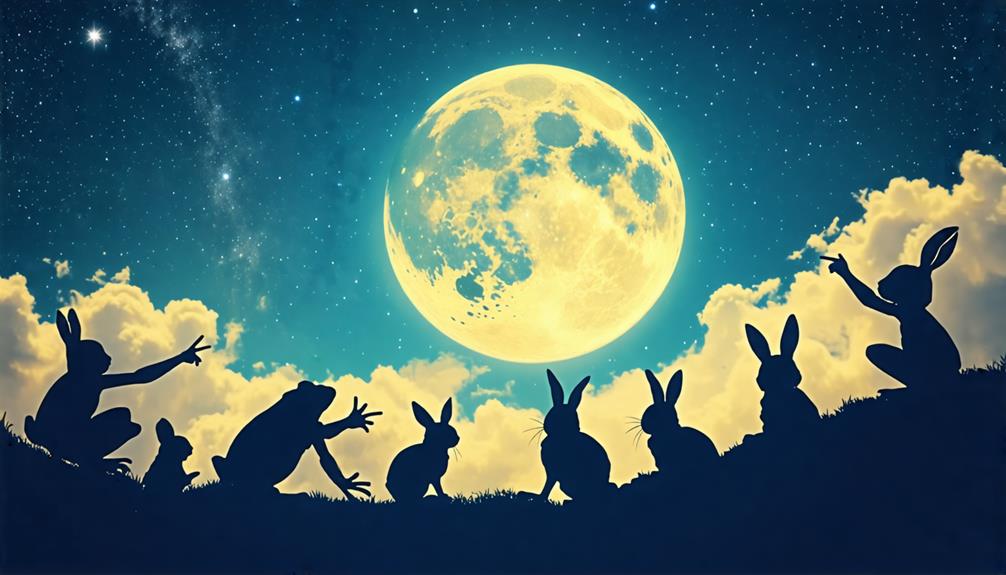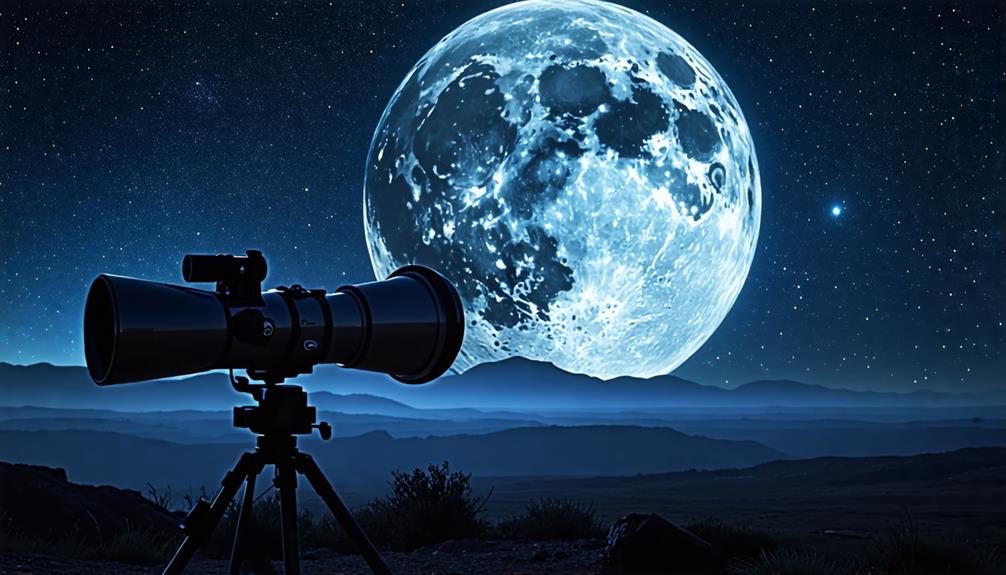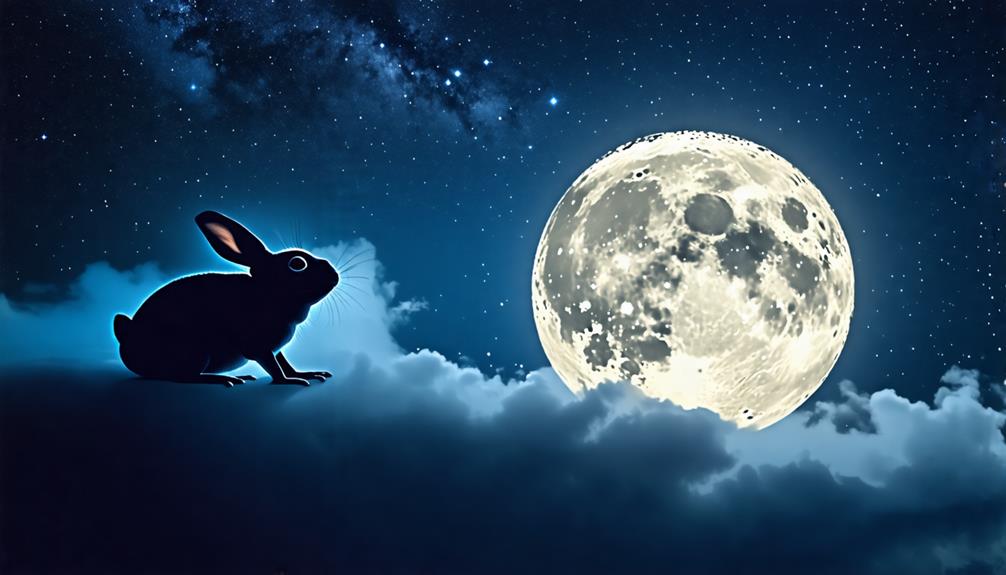You've likely gazed at the moon countless times, but have you ever noticed a frog or rabbit staring back at you? It's not just your imagination playing tricks. Cultures worldwide have long seen familiar shapes in the lunar landscape, a phenomenon known as pareidolia. From Chinese tales of a jade rabbit to African stories of a celestial frog, these interpretations reveal our shared human tendency to find meaning in the cosmos. While science explains the moon's features differently, these cultural perspectives offer a fascinating glimpse into how our ancestors made sense of the night sky. What other secrets might the moon's face hold?
Key Takeaways
- Lunar pareidolia leads different cultures to interpret shapes on the moon's surface as familiar animals like frogs or rabbits.
- Chinese folklore features the Moon Rabbit, associated with Chang'e and the elixir of immortality.
- Aztec mythology includes a rabbit story related to the moon's brightness.
- African folklore, particularly Angolan, depicts a frog as a messenger to the moon king.
Lunar Pareidolia Across Cultures

Across various cultures, people have long recognized familiar shapes on the moon's surface, with rabbits and frogs being common interpretations of lunar features. This phenomenon, known as lunar pareidolia, is deeply rooted in various mythologies worldwide.
In Chinese culture, you'll find the Moon Rabbit, associated with Chang'e and the elixir of immortality. The Aztecs believed a rabbit was thrown into the moon, affecting its brightness. African folklore depicts a frog as a messenger to the moon king, while the Cree people of Canada have a legend of a rabbit visiting the moon.
These diverse cultural narratives showcase how lunar pareidolia has shaped our understanding of the moon's appearance. Whether you see a rabbit in the moon or a frog, these interpretations reflect the rich tapestry of human imagination and storytelling across different societies.
Folklore Behind Moon Shapes
The folklore behind these lunar shapes reveals a rich tapestry of stories and beliefs that have shaped cultural interpretations of the moon's features for centuries. You'll find that different cultures see various patterns on the moon's surface, from the familiar "man in the moon" to the lesser-known "frog in the moon" or "rabbit on the moon." These interpretations often tie into creation myths, love stories, and tales of moon goddesses. For example, in some Native American traditions, you might hear about a great king or a marriage proposal involving the moon. The vast lunar mare Oceanus Procellarum plays a role in many of these stories.
| Culture | Lunar Shape | Associated Story |
|---|---|---|
| Chinese | Rabbit | Moon Rabbit making elixir |
| Aztec | Rabbit | Dimming the moon's brightness |
| Angolan | Frog | Delivering marriage proposal |
| Salish | Toad | Escaping a wolf's pursuit |
Scientific Explanations and Observations

Scientific scrutiny of lunar topography reveals the origins of frog and rabbit shapes perceived on the moon's surface. The moon's features, including maria, craters, and highlands, create complex patterns that different cultures interpret uniquely. This phenomenon, known as lunar pareidolia, explains why you might see various shapes on the moon.
NASA's photographic observations have provided detailed insights into the moon's surface, allowing for scientific analysis of these cultural interpretations. Key areas contributing to the rabbit or frog shapes include:
- Sea of Tranquility
- Mare Serenitatis
Research in psychology suggests that pareidolia, a cognitive tendency to recognize familiar shapes in random patterns, influences how cultures perceive the moon's topography.
Conclusion
As you gaze at the moon, you're participating in a timeless human tradition.
Whether you see a frog, rabbit, or something else entirely, you're tapping into the rich tapestry of cultural interpretations.
While science explains the moon's features, it's the stories we've woven that truly captivate us.
So next time you look up, remember: you're not just seeing craters and shadows, but millennia of human imagination and shared experience.

Leave a Reply